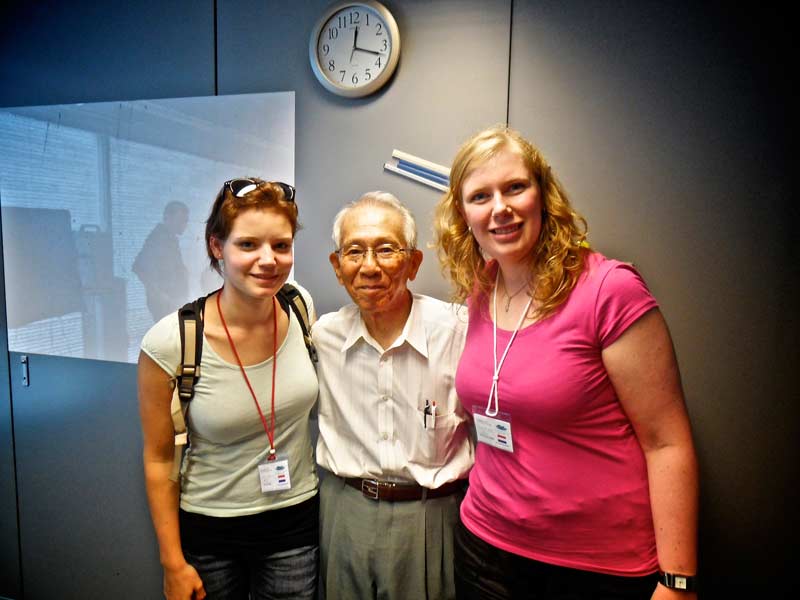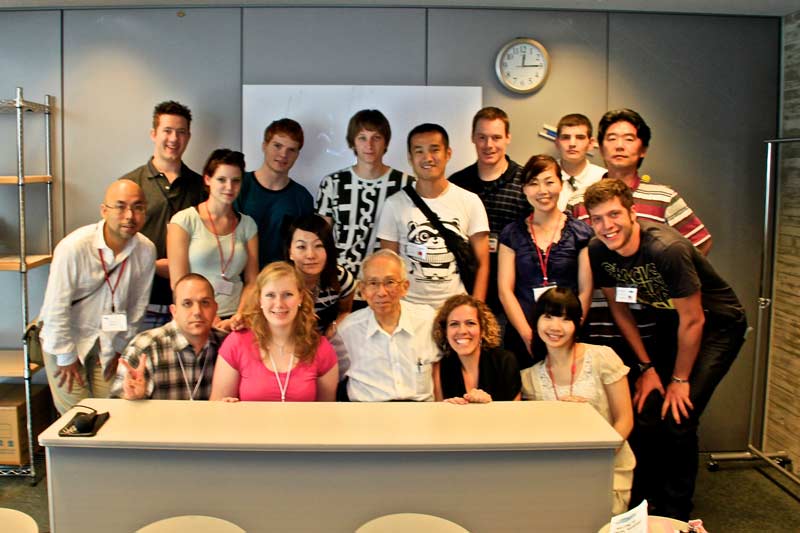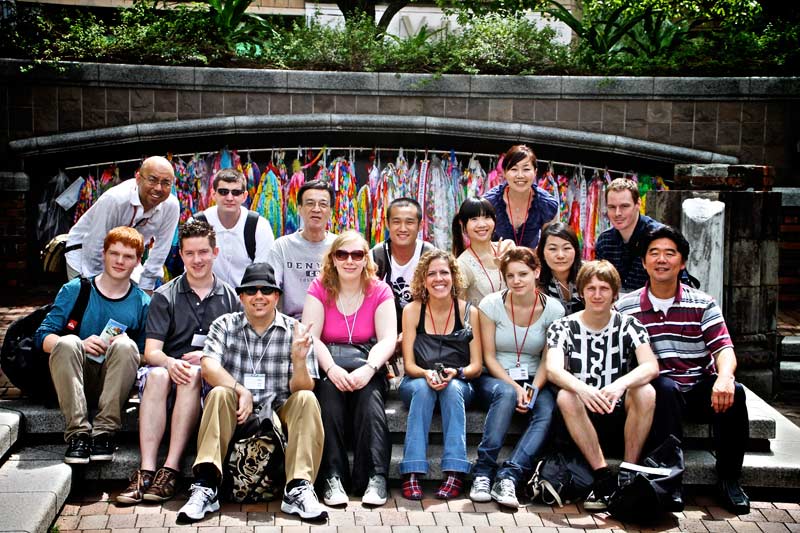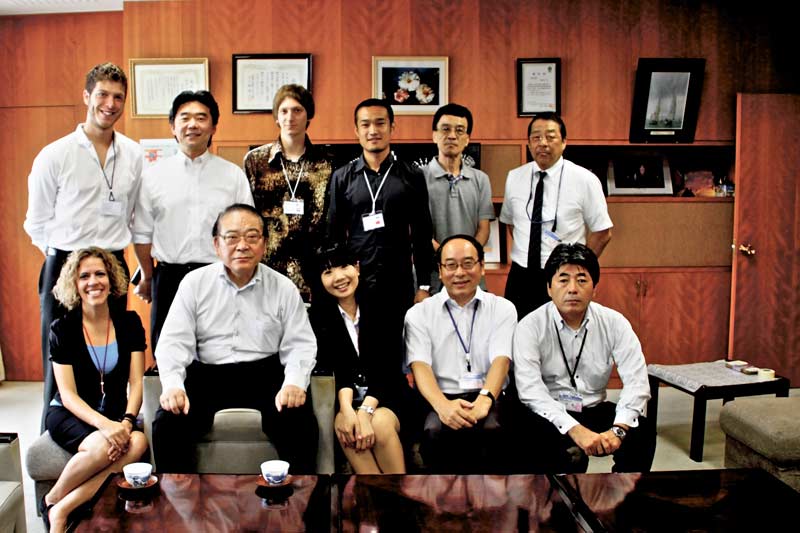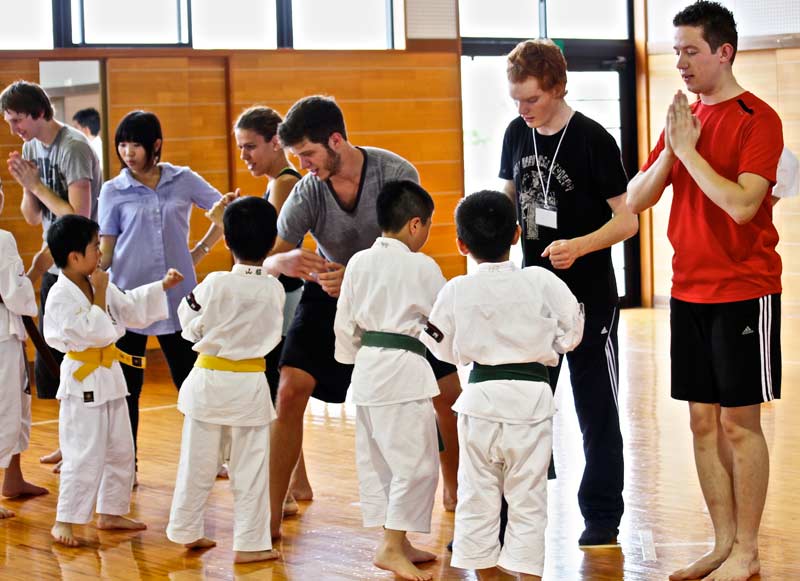The first day after meeting my host family in Omura even before the program week began I got a rare opportunity from my host family. My host mother, who is a elementary school teacher, decided to introduce me to Japanese elementary school life. It sounded nice so of course I took this chance but little did I know I would end up going into the rice fields and planting rice! Something I had never expected doing in my life. Also the way they plant the rice was different from what I imagined or seen. I thought they would just randomly plant the rice siblings on places that looked well for planting. But no, they span a line across the rice field and plant the rice siblings just in front of it, then the line moves and every one moves with it. It’s a very interesting and effective strategy. Seems like I learn something new every day!
This was also a good opportunity to meet new people, older and younger. During the planting of the rice I talked to the kids, teachers and other people of whom I have no idea what they were doing there. I taught them about my country and they taught me about Japan. They learned that we don’t have any rice paddies at all and that instead of rice we mainly plant potatoes in The Netherlands. At one point a frog hopped on the girl and she was so frighten she fell into the mud, so they then taught me the Japanese word for frog (while laughing at the girl) which is: ‘kaeru” and I taught them it in Dutch: “kikker”. Everyone seemed to be enjoying the activity that day. I know I did. Except the mothers on the other hand, maybe because they probably have to wash the clothes afterwards…muwhahaha! All and all is was a great day and fun experience and I hope to be able to do it again while in Japan.
(Juir from The Netherlands)



